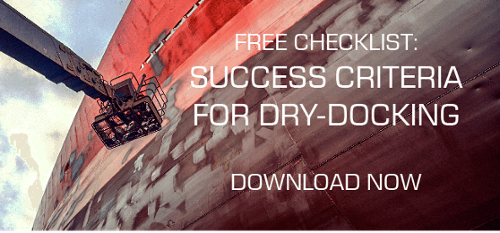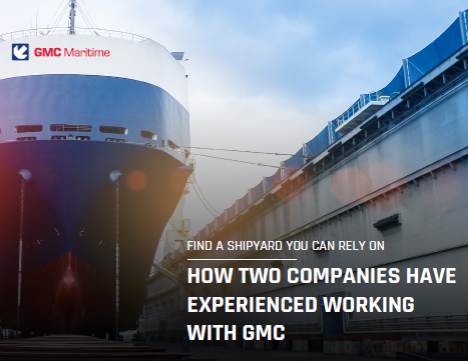
There are many risks associated with the work of dry-docking a large ship. Accidents can have severe consequences for both crew and vessel. To safeguard these assets properly, you must go beyond the basic HSE rules and regulations.
Although the shipyard is responsible for security at their docks, everyone affiliated with the ship should contribute according to their role.
Safety and security is very much a team effort. Here are three HSE-related tips for dry-docking, that you should consider.
1. Be clear about your responsibility
The captain is always responsible for the ship and his crew – also during docking. The management at the shipyard is legally responsible for the security of the ships docking and the maintenance crew while the ship is in the dock.
But for them to conduct their work as seamlessly as possible, you - the superintendent - must offer the right technical information when making the repair work specification.
Make crystal clear arrangements between you and the shipyard regarding responsibility. What can you expect from them and what should they expect from you?

Also, you should make yourself available to the yard for daily safety meetings. Here you can address any gaps between plan and execution, and ensure that the safety standards are held at an acceptable level throughout the process.
Remember that safety measures also can be effective when applied preventatively. You should offer your technical expertise to the rest of the vessel management.
Together you can make an informed decision about which shipyard or docking station holds the required level of contingency management.
Yes, the location and the size of your ship set certain criteria for the type of dock you can use. However, the shipyard's dedication to safety is paramount because the consequences following an accident could be monumental and even fatal.
So, make sure you are briefed on the shipyard's HSE policy and contingency management system before handing over your valuable vessel.
2. Risk assessment and Contingency plan
The shipyard should provide you with a thorough risk assessment and detailed project plan before the work begins.
Recommended reading: Does the ship have to be gas free before dry-docking?
If the ship management plans to do any additional repairs or maintenance while the ship is in the dock, there should be conducted a separate risk assessment for this.
Some common risks when dry-docking:
- Fire - Injury to crew/staff
- System or machinery malfunctioning
- Equipment failure
- Flooding
However, remember that a risk analysis isn't good for much unless it's complemented by a contingency plan or action cards. You need to know the possible risks, but also establish the necessary actions and notification routines following an incident.
Creating a good contingency plan enables you to minimize the impact of an incident, protect your assets and ensure that business can go back to normal as quickly as possible.
3. The E of HSE: The Environment
HSE isn't just about ensuring our soft and hard assets; it's also about fulfilling environmental legislation.
Waste must be handled and disposed off properly, and don't forget that a lot of toxic waste becomes a fire hazard. The owner of the ship or the shipping company’s agent is required to register a waste report in the national message portal SafeSeaNet Norway.
Waste report must be submitted no later than 24 hours before arriving at the shipyard.
The shipyard will deal with the amount of waste reported. Sjøfartsdirektoratet (the Norwegian maritime authority) shall be notified if the ship does not deliver waste according to the report.
Click here and download your free guide:
Image: Øyvind Hagen, Equinor and Pål Christensen, Stavanger aftenblad. This blog article was originally published 15. May 2018 and updated for the pleasure of our new readers since then.




